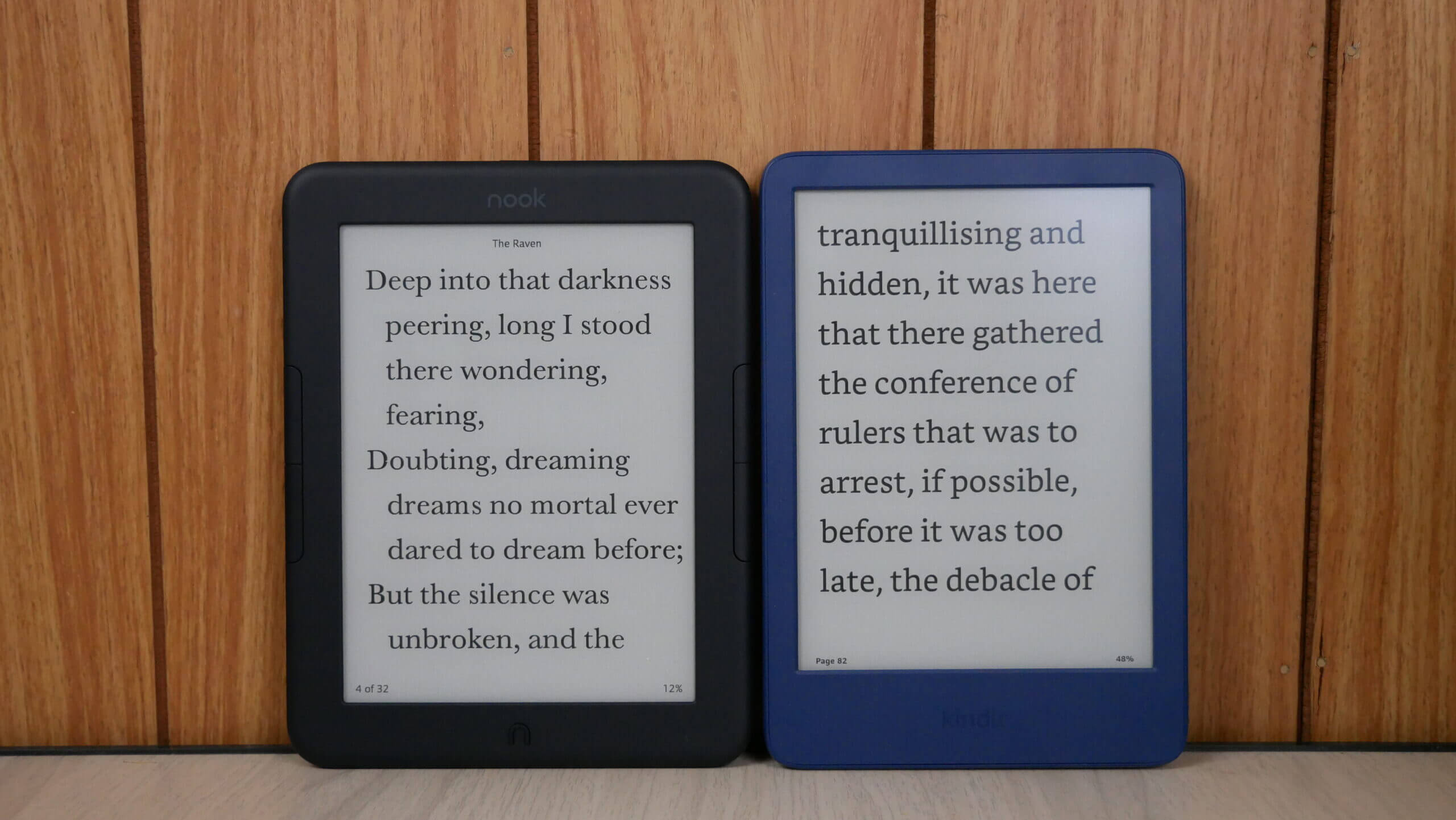The Barnes and Noble Nook Glowlight 4e and 11th Generation Amazon Kindle are two entry level e-readers. They are designed to be cost effective ways for new users to get invested into their eBook ecosystem. There are plenty of compelling selling points for each model. The Kindle finally has a new 300 PPI display, all previous models have had 167 DPI, which made made text look fuzzy, now it is razer sharp. There is a new USB-C port for charging and transferring data and 16GB of storage to house all of your audiobooks, e-books, comics and manga. There is also an all-new system wide dark mode, so the colors will be inverted, the background will be black and text while, adding some contrast when reading at night. The Barnes and Noble Nook has a 212 PPI screen and 8GB of storage space, so you are not getting the same quality reading experience as the Kindle. However, it is using more RAM and a faster processor, so the software experience is little more fluid.
The Amazon Kindle edges out the Nook in terms of the hardware experience. This is primarily due to the high resolution screen, which makes a huge difference if you are reading a couple of books a month. 300 PPI vs 212 PPI does make a difference, especially if you put them side by side with the same books. However, the ecosystem is just as important. Books that you buy will be stored in the cloud and able to be read on both of the companies reading apps for Android or iOS. They both have access to the same big name titles and books issued by small, medium and large publishers. The only difference is the books written by indie authors using Kindle Direct Publishing or Nook Press. However, Amazon does have a number of added benefits such as Kids+ which gives your little one access to all sorts of Kid friendly content. Kindle Unlimited is a monthly subscription platform that gives users a million titles to read, however most of the content is not that great. Prime Reading is a little bit better, with more bigger name titles, by well-known authors and as long as you are a Prime Member you can get them for free. Finally, Amazon does have Vella, which are short stories. Barnes and Noble does not really have any of any subscriptions for books, but they do have one for audiobooks.
I believe the Kindle also edges out the Nook on the software experience. The Kindle has system wide dark mode and innovative features such as X-Ray, Word Wise, Goodreads and a web-browser. Barnes and Noble does not have a internet browser, but is focused more on reading, distraction free. I also like Nook Readouts, which has interviews with authors and previews of upcoming books you need to know about.
One of the biggest strengths of the Nook are the manual page turn buttons. This is a signature of the Nook brand, going back to the very beginning. The buttons curl towards the back of the device and are on the right and left side of the screen, which is ideal for people who are right or lefthanded. There is also a physical home button that will always bring you back to the home screen. I like the tactical feel of pressing physical buttons, instead of always swiping and gesturing on the touchscreen.
Michael Kozlowski is the editor-in-chief at Good e-Reader and has written about audiobooks and e-readers for the past fifteen years. Newspapers and websites such as the CBC, CNET, Engadget, Huffington Post and the New York Times have picked up his articles. He Lives in Vancouver, British Columbia, Canada.

